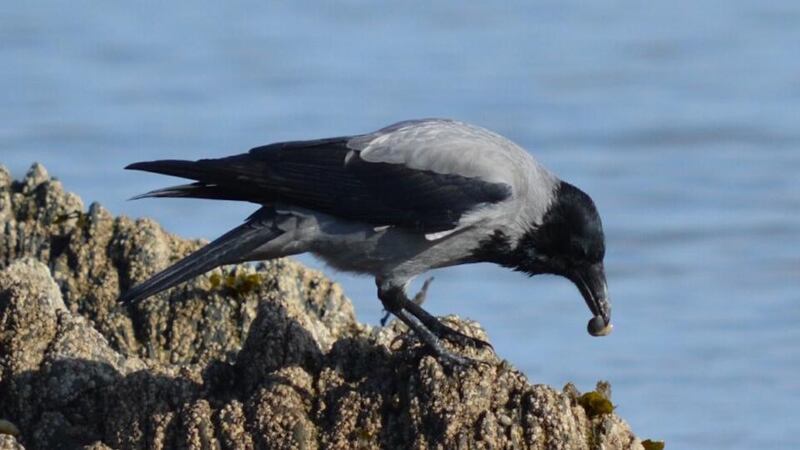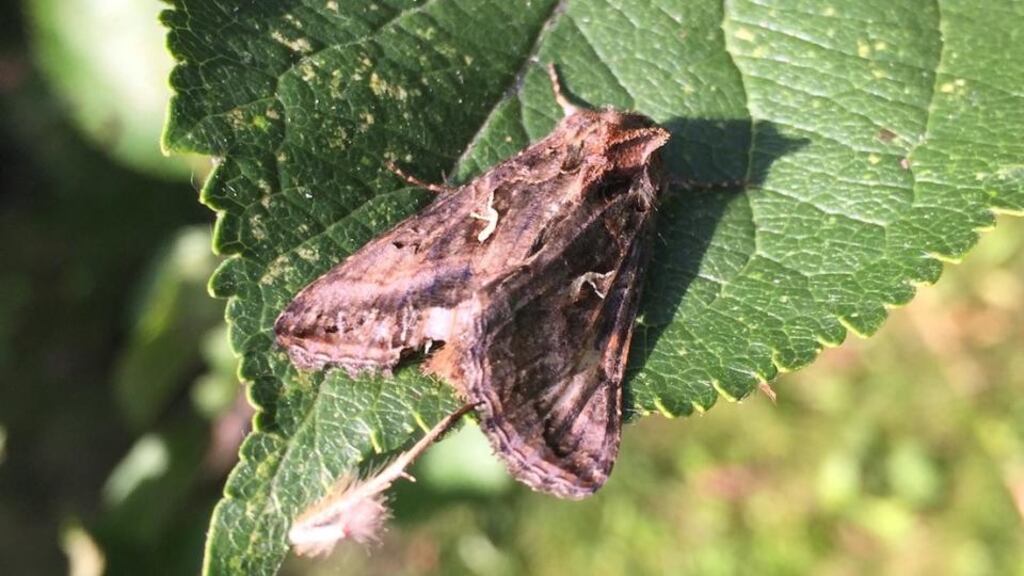I saw what I think is a silver Y moth in my garden early in October. What is protruding from it? I checked online, and it seems that it is the male's androconial organ, used to emit pheromones to attract females.
Francy Devine
Howth, Co Dublin
The moth is either the plain golden Y moth or the beautiful golden Y moth. And the protrusion is indeed its androconial organ, called the 'coremata' (Greek for feather duster), because it is covered with hairs that waft the scent glands to attract the female.
In mid-October the wasps were still zipping in and out of the nest in my front garden. I'm wondering how best to relocate them once they shut up shop for the winter, as I'm in their flight path when getting in and out of my car.
Finbarr Domoney
Leopardstown, Dublin

The wasps will leave the nest shortly and never return to it. The queen will make a new nest in spring, and this year’s workers will go on a sugar spree and die off with the onset of cold.
The guy in my photo was collecting stuff from the rocks and flying off with his trove.
Larry Dunne
Rosslare Harbour, Co Wexford
The grey crow was collecting shellfish off the rocks and dropping them from a height on to a hard surface, to break the shells.
I noticed growths on chaffinches' feet and signs of them on the young ones.
George McDermott
Creggs, Co Roscommon
This is caused by the 'Fringilla papillomavirus', which affects chaffinches and bramblings, causing warty growths on the feet and bare part of the leg. So far there is no cure, but keeping the feeding areas clean would help to stop it spreading.
Ethna Viney welcomes observations and photographs at Thallabawn, Louisburgh, Co Mayo, F28 F978, or by email at viney@anu.ie. Please include a postal address









